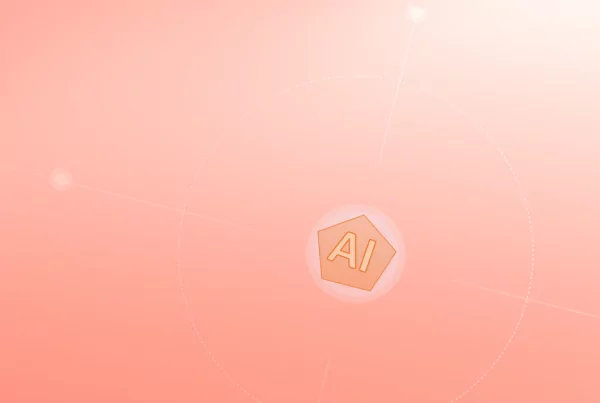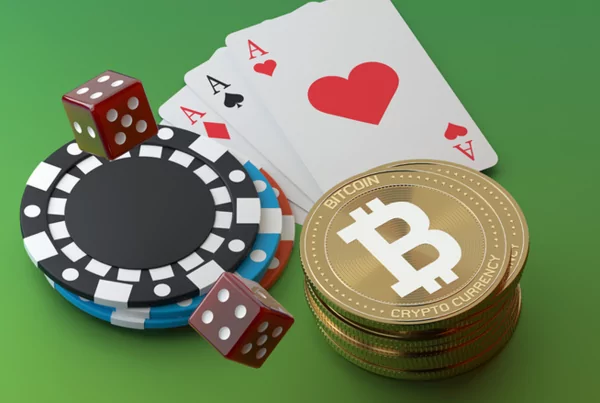Cryptocurrencies reached their peak in value in 2017. Everyone wanted to get bitcoins, invest in ICOs, and get rich overnight.
This year, while the craze is slowly starting to fade, serious investors and entrepreneurs who understand how the industry works are looking forward to seeing some stabilization in the market.
While many still have doubts, 2018 brings a promise of ICO maturity.

Photo by David Shares on Unsplash
What Is An ICO?
For those who are not familiar with the terminology, in essence, an ICO (initial coin offering) is a crowdfunding process for new cryptocurrency ventures. A tech startup can create an ICO to raise money for a new project.
The first step is to write a whitepaper, advertise the idea, state how much tokens will be released, and for how long the ICO will last. Typically, a token is a new cryptocurrency that has the potential to be traded for other already established cryptocurrencies such as Bitcoin or Ethereum.
Alternatively, the token can be valuable solely for the project it is associated with. Once the product or service the ICO supports takes off, the distributed crypto-tokens can be used to obtain said services or products.
So, with an ICO, a company receives money by creating and selling tokens. Of course, tokens need to be worth something, i.e., the new project or the new company are expected to succeed in the future. If that happens, investors can sell them at a higher value, in which case the ICO is considered to be a success.
The Most Famous ICO So Far
Three years ago, investing in ICOs wasn’t nearly as popular as today. Nowadays, there are many successful startups who got their fundings this way. New tech startups don’t have to go anymore through a long and tiring process of traditional funding methods.
The biggest and most famous ICO investment so far was the one that happened with Ethereum, a cryptocurrency that btxchange.io reports raised more than $2 million dollars during from a token sale.

It is an open source platform for developers who use it to write code for decentralized applications. It has built-in smart contracts that enable automatic, trustless payments, transactions, and exchange of content.
With Ethereum, it was the idea, the business plan, and the product that made the entire ICO successful.
Many investors and startups nowadays organize their ICOs hoping for the same. The main reason why they are so popular is due to the cryptocurrency hype, but also because it’s possible to get millions of dollars in just a few hours.
One of the fastest ICO ever seen happened when Brave browser raised 35 million in just 30 seconds. Its founder, Brendan Eich, played a major role here. He is a co-founder of Mozilla browser and the creator of JavaScript programming language.
When a startup with such name behind it asks for investments, it is natural to expect that people would be in such a hurry to invest.
However, it wasn’t just the name that attracted investors. The concept of a browser that will block trackers and remove annoying ads once and forever also contributed.
Ideas matter and great ideas matter a lot.
[bctt tweet=”Ideas matter and great ideas matter a lot.” username=”coincheckup”]ICOs are to some extent similar to what selling shares via IPO or VC is. As we explained above, a company asks for funding by selling its tokens for cryptocurrencies and then uses the funds to build its project. The greatest concern for investors, however, is that there are little to no guarantees that the token will be valuable in the future. We discuss this in the following section.
Whitepaper
When a company decides to go for an ICO, it presents investors with a certain business plan. This plan must have clear and precisely set goals, background information, and has to be data and goal driven.
Forget about elevator pitches, cool ideas, and overly hyped stories.
When looking into ICO investing, the whitepaper is what gets the money. While many turn to aggressive advertising, using catchy phrases and stories appealing to inexperienced masses who want to be part of the crypto craze, a solid whitepaper is what investors want to see first.
The development team, market analysis, and progress performance reports are of grave importance. To change the fraudulent nature of ICO market and gain investors’ trust, startups need to stick to those three components. Additionally, In 2018 investors started bringing experts to weigh in on the startup’s idea and whitepaper.
Risk assessments and background checks are crucial.
However, what are you going to do when a startup has just been founded and there is no background to check out?
In that case, it’s best to look for clearly defined goals and to invest only if there is a backup plan. If the big idea fails but some parts of the project can still be used, not all investment is lost.
In one word, the first sign of ICO maturity should be a clean, precise whitepaper for all parts of the project.
How To Recognize A Good Whitepaper?
A good whitepaper should have a detailed description of how its token works, who will create it, and what is the main business idea.
There should be enough information about how the blockchain technology will be implemented and why it is a better solution than any other existing technology.
A good whitepaper also has a clearly defined target audience and contains information relevant to the people in the industry. Investors need to know how exactly the new proposed solution to a problem can be implemented within a specific branch.
A lot of startups fail to specify why they need blockchain in their businesses.
If there are no clear specifications about how exactly is blockchain necessary, it’s wise to stand back and put the money elsewhere.
[bctt tweet=”If there are no clear specifications about how exactly is blockchain necessary, it’s wise to stand back and put the money elsewhere.” username=”coincheckup”]Transparency
The beauty of the blockchain industry lies in its transparency philosophy.
It means that all interested parties can have full access to all financial transactions or other exchange of data conducted through blockchain.
This is particularly important for some industries (such as charities for example) as one can easily track money transfer and distribution.
ICOs have similar transparency features while granting anonymity at the same time. There are even certain programs such as ICO Transparency Monitor where everyone can check the “transparency rating” of an ICO.
Journalists and investors can access the information about assets and transactions. A big sign of ICO maturity is that it’s turning from the trustless market into an open one.
One of the biggest ICO downsides for a long time was that transactions and general reports were not mandatory. Instead, it was possible to hold an ICO and never file a single report to investors.
Things are changed now, so every serious ICO puts great effort into open communication, building trust and transparency. To earn trust, startups send regular progress reports, share news about reached milestones, and form open relationships with the community.
It’s not just investors they look to impress. Keeping tight with fans and supporters speaks a lot about credibility too. Quite often product beta testers are found among fans and supporters, sometimes even investors!
Safety
With ICO, it’s not the technology we should be worried about but the human error that can jeopardize the entire business.
If an app is decentralized, it means that it can’t be hijacked that easily. For this reason, the blockchain technology is currently considered one of the most advanced and safest technologies we have.
So, the problem here is not the system itself, but the possibility of human errors and lack of regulations.
The most tragic theft in the ICO world is related to a company called DAO, or Decentralized Autonomous Organization, where hackers stole almost $60 million in 2016.
The company was created using the Ethereum platform. Its main idea was to have one big fund where everyone who invested should have a say about where the money should go next. Think of it as a blockchain technology based app for funding.
Similar to data being kept in decentralized blockchain, the decision about where the money should be invested was also “decentralized”, i.e. equally distributed among all investors.
The idea was perfect, but the human error – bug in the code – was a perfect opportunity for hackers to grab the money and disappear.
Bans And Regulations
Google, Facebook, Twitter, and Instagram banned the ICO related ads. Such big companies vouch for credibility and the unregulated ICOs are not what they want to deal with. In some countries initial coin offerings are even completely banned.
This is actually good news for ICOs. By banning them, these countries and companies are just sending a message that the market desperately needs regulations.
After the big drop in 2018, crypto markets are slowly starting to stabilize again and big investors are bringing in financial and legal expertise to enforce new, meaningful regulations.
In South Korea, the government lifted the ban and allowed regular crypto trading. The United States Securities and Exchange Commission (SEC) is working on regulations that would help investors to have more control over their money and protect the customers.
What’s extremely good news for ICOs is that everyone encourages the development of the technology; it’s just the unregulated crowdfunding that remains problematic. In some countries like Japan, cryptocurrencies are completely legal, but everyone who uses them has to register.
In Europe, the biggest step towards ICO maturity has been done in Switzerland. FINMA, the Swiss Financial Market Supervisory, issued a list of regulations that businesses must follow if they want to go public with ICO.
First and foremost, only three type of tokens can be used: payment, utility, and asset tokens. Payment tokens function just like any other cryptocurrency and they become a regular cryptocurrency after the project succeeds.
Utility tokens serve just to provide access to different applications, which is why they are also called app tokens. If you invest in a service and buy its utility token, once the service is launched you can use your utility token to access it.
The third type is tradeable asset token. It is a digital representation of a real tradeable asset such as precious metals or diamonds.
In the US, asset tokens are regulated by SEC (Securities and Exchange Commission). In Switzerland, every single type of token is regulated by the government.
With regulations on the horizon and government enforcing new and existing laws of trade and anti-money laundering, ICOs have a bright future.
Regulations can bring stability which could result in tougher entry requirements but would increase trust and transparency. For many, this is the only way ICOs can be an essential part of the innovative technologies that bring advanced blockchain solutions.
Of course, many are afraid that eventual regulations will be heavy-handed, crafted without the necessary deep understanding of the crypto world, its technological peculiarities and its dynamics. That’s why it is important for the crypto community itself to create best practices that can be presented to the regulatory organs.
Ideally, the regulations should approach the issue in a sensible manner that stimulates and promotes innovation while guaranteeing security to the potential investors that they won’t be cheated.
This way entrepreneurs will continue to receive the necessary funds, investors will know the terms of engagement, and the technology will continue to change the world as we know it.

Infographic URL: https://btxchange.io/ico-roundups-infographic/



